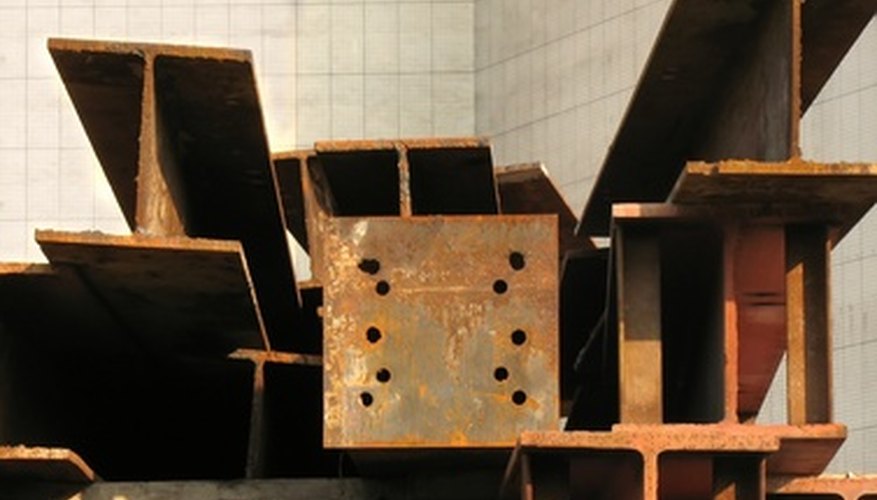A distributed load is a force spread over a surface or line. The distributed load on a surface can be expressed in terms of force per unit area, such as kilonewtons (kN) per square meter. The load on a beam can be expressed as force per unit length, such as kN per meter. A point load is an equivalent load applied to a single point. You can determine it by computing the total load over the object's surface or length and attributing the entire load to its centre.
- A distributed load is a force spread over a surface or line.
- The load on a beam can be expressed as force per unit length, such as kN per meter.
Determine the total length or area to which a load is applied. For example, if a load of 10 kilonewtons (kN) per square meter is applied to an area measuring 4 meters by 6 meters, then the total area is 24 square meters. If a load of 10 kN per meter is applied to a beam measuring 5 meters in length, then the total length is merely 5 meters.
Determine the centre of the area or length. If you plot the 4-by-6-meter rectangle with its lower left corner at the origin and its length along the X-axis, then its corners are at (0,0), (6,0), (6,4) and (0,4), and its centre is at (3,2). The centre of a 5-meter beam is 2.5 meters from either end.
Multiply the load per unit area or length by the total area or length. For the rectangle, you compute 10 kN per square meter multiplied by 24 square meters to get 240 kN. For the beam, you calculate 10 kN per meter multiplied by 5 meters to get 50 kN.
Write your answer as the total load in Step 3 applied to the point you determined in Step 2. For the rectangle, the point load is 240 kN applied to a point 3 meters from an end in the length dimension and 2 meters from an end in the width dimension. For the beam, the point load is 50 kN applied to a point 2.5 meters from either end.
- Determine the centre of the area or length.
- For the rectangle, the point load is 240 kN applied to a point 3 meters from an end in the length dimension and 2 meters from an end in the width dimension.
TIP
You can use this general method for any shape if you can determine its centroid (the centre of its mass) and total area. For example, the centroid of a circular area of uniform mass is its centre, and its area is pi times the square of its radius.
